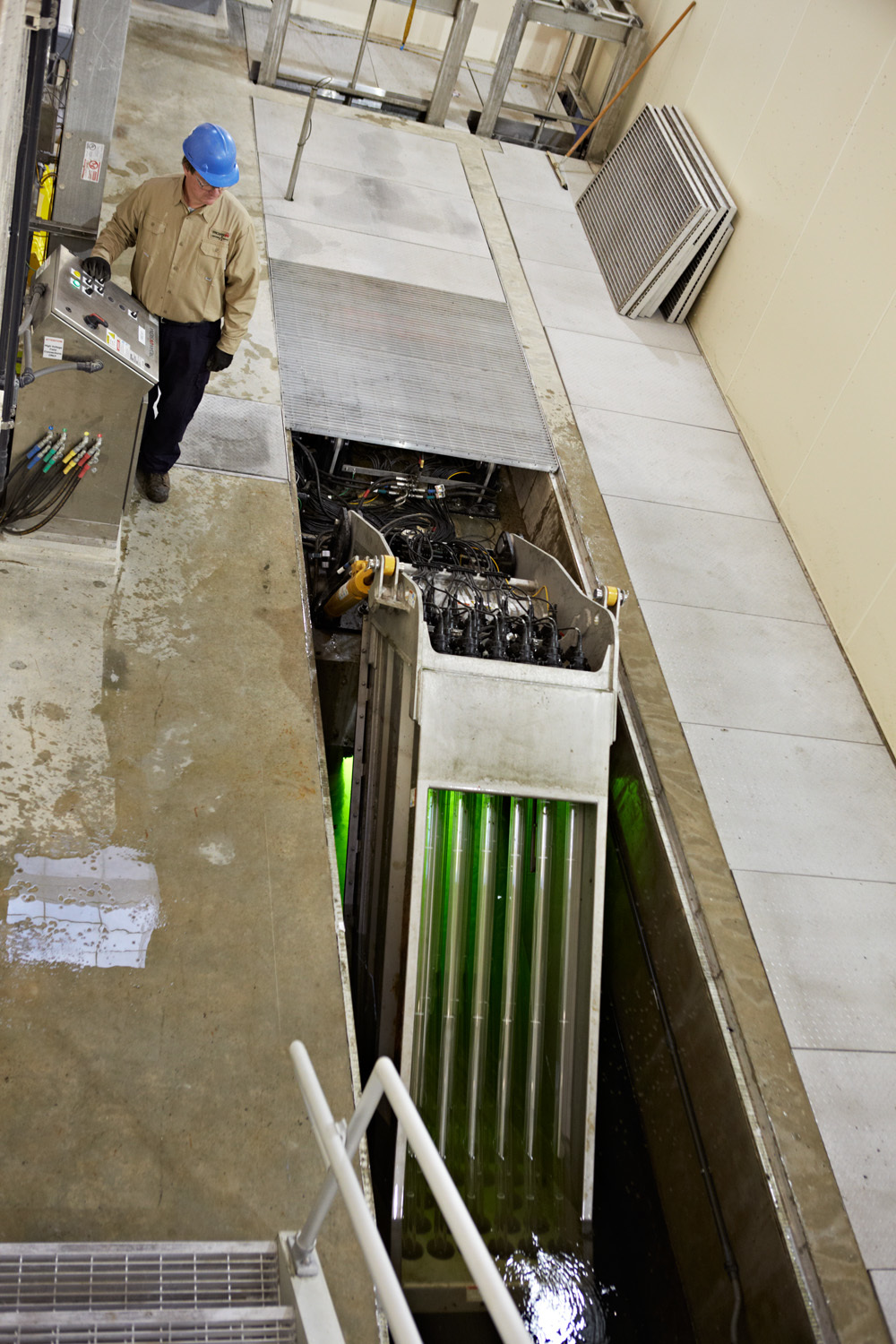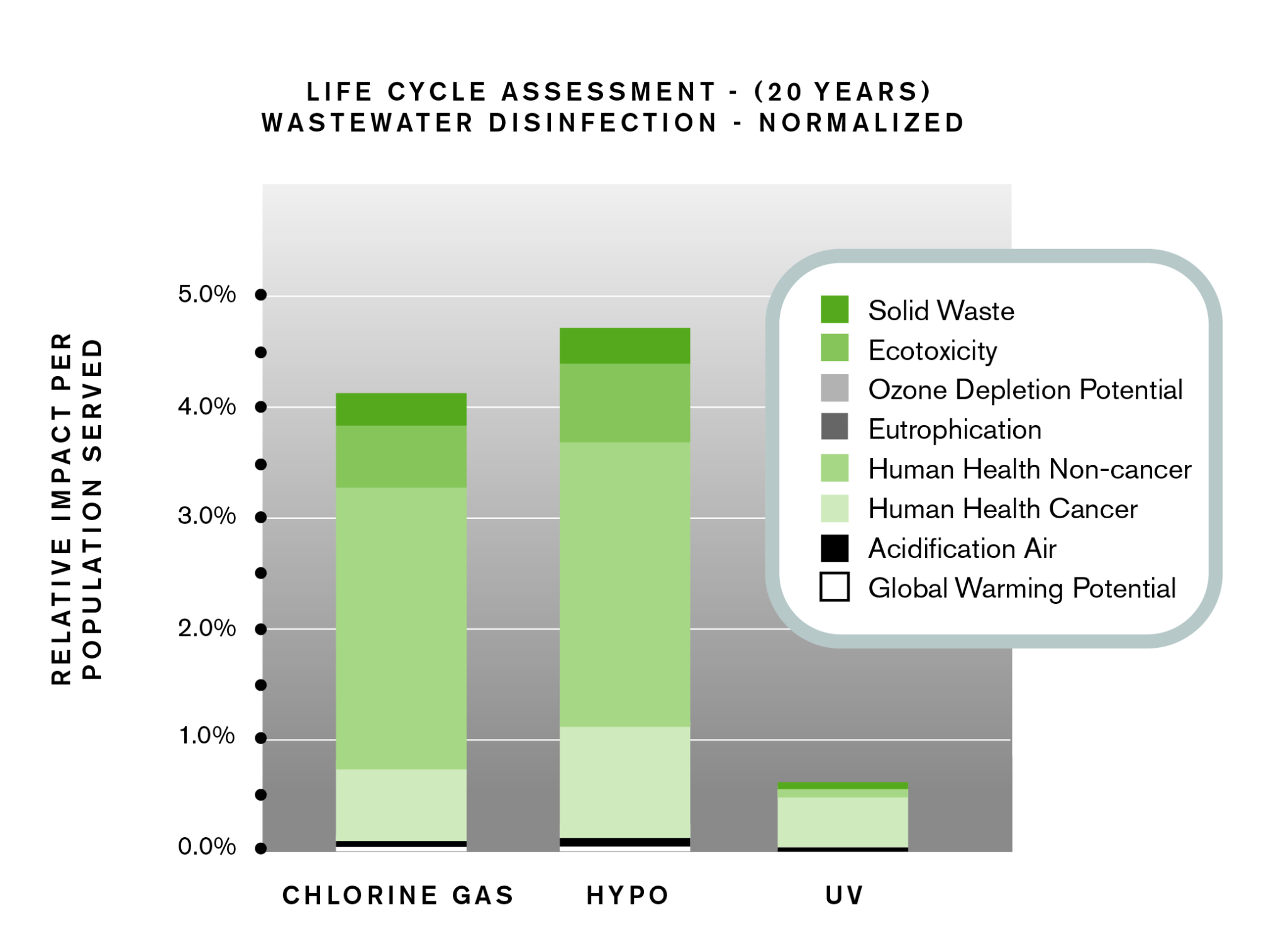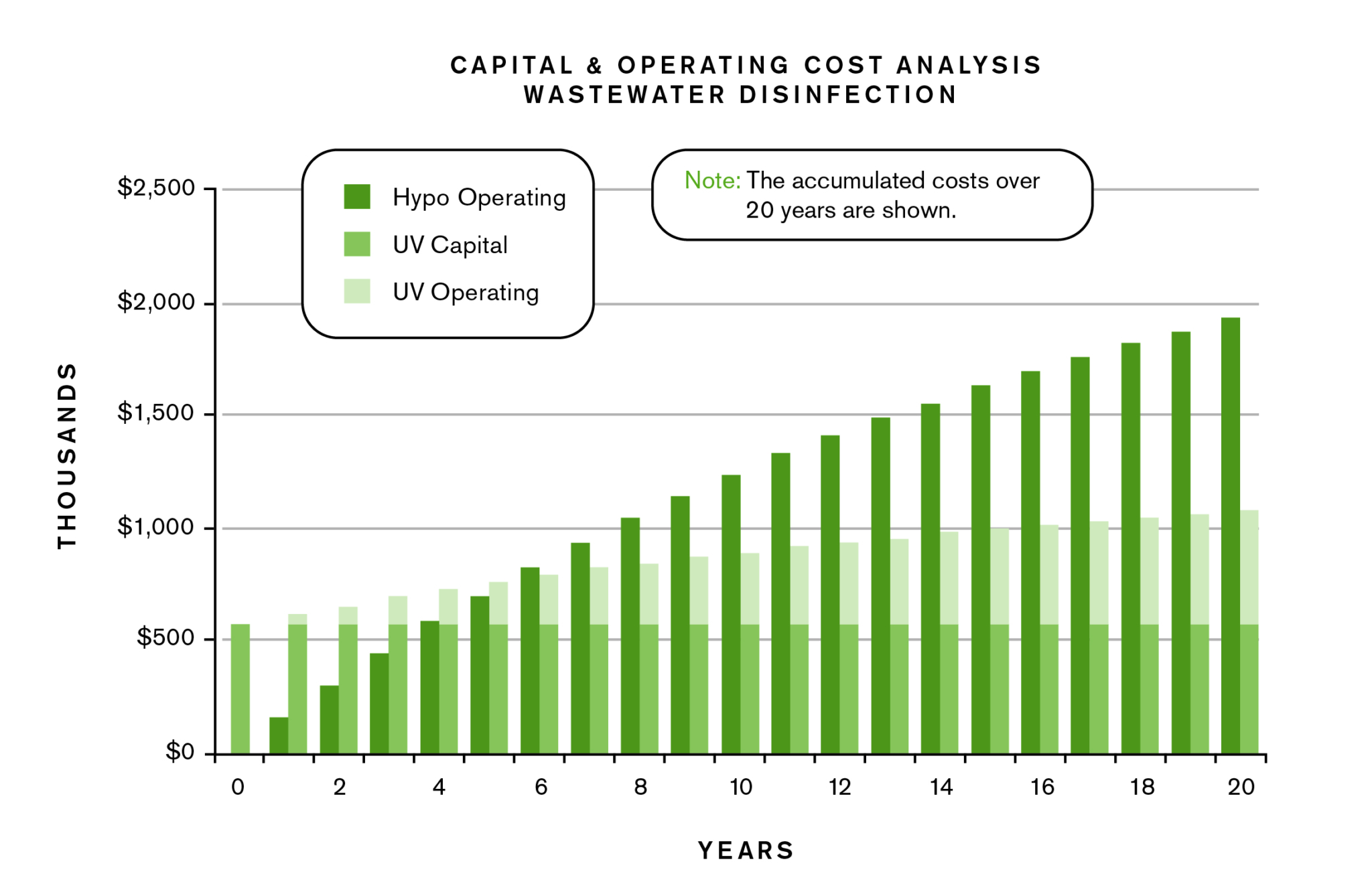Interested in Disinfection?
Get Disinfection articles, news and videos right in your inbox! Sign up now.
Disinfection + Get AlertsFor the past few decades, and increasingly today, UV has been successfully used around the world for municipal wastewater disinfection. As a growing alternative and a direct replacement technology to chemical (chlorine) disinfection, UV does not produce harmful byproducts and is not toxic to the environment
In this Q&A, Wayne Lem, TrojanUV’s market manager, sheds light on the differences between the two disinfection options.
What are the most commonly used alternatives for disinfecting treated wastewater?
Lem: Traditionally, the use of chlorine gas was the most common method of wastewater disinfection. Chlorine gas itself is relatively inexpensive but is a highly toxic chemical that must be transported and handled with extreme caution. It is stored under pressure in large tanks and is released into the wastewater as a gas. Sodium hypochlorite is a diluted liquid form of chlorine that is also commonly used.
Today, UV disinfection is widely accepted for municipal wastewater disinfection around the world. UV is rapidly growing, given it’s a safe and cost-effective alternative over chemical disinfection. Also, it produces no disinfection byproducts or a chlorine residual, which is harmful to the environment. The UV disinfection process adds nothing to the water but UV light, and therefore, has no impact on the chemical composition of the water.
How effective is UV at destroying pathogens, as compared to chemical disinfection methods?
Lem: UV is a very cost-effective and a reliable technology that protects the public against pathogenic microorganisms, including protozoa, bacteria and viruses. Chemical disinfection using chlorine is also effective against these pathogens; however, there are pathogens, such as Cryptosporidium and Giardia, which are chlorine-resistant but can be disinfected by UV light.
Unlike chemical approaches to water disinfection, UV provides rapid, effective inactivation of microorganisms through a physical process. The retention time required to achieve disinfection ranges from a few seconds compared to several (>30) minutes for chlorine disinfection. This eliminates the need for large chlorine contact chambers, thereby reducing the required footprint and cost of installation.
Are there any employee safety issues involved with operating a UV disinfection system?
Lem: There should be safety plans in place for any disinfection technology used. The safety risks for operating a UV system, although low, are related to operator exposure to high levels of UV light and possible electrical hazards. The exposure to UV light is very low given that UV light is shielded from operators by channel grating and “light locks.” There are lock-outs in the power cabinets as well to ensure power is off, and lock-out/tag-out occurs when servicing a UV system. As with operating and working with any type of equipment, it is recommended that proper personal protective equipment be worn and safety procedures be followed. Owners and operators of UV disinfection systems should have operational practices in place. These are generally provided in the O&M manual from the UV system supplier and cover several items, including:
- Procedure for lamp maintenance and replacement
- Procedure for monitoring the system operation
- Proper disposal of UV lamps, ballasts, quartz sleeves and other components
What types of public safety concerns are associated with the use of UV disinfection versus chlorination?
Lem: The advantage that UV disinfection is a physical process and does not alter the quality of the water also makes it a perceived disadvantage, in that it does not leave a residual for monitoring. Without a residual, there may be a concern that the UV dose is low and pathogens are not being adequately disinfected, and/or pathogens can sometimes repair and reverse the destructive effects of UV through a “repair mechanism,” known as photoreactivation, or in the absence of light known as “dark repair.”
Although these may be legitimate concerns, they can be overcome by working with a UV supplier with proper sizing tools and expertise in leading-edge controls and monitoring.
Through proper sizing, an adequate UV dose can be delivered to prevent photo reactivation. Furthermore, through incorporating a robust and calibrated UV lamp intensity sensor for dose control, the real-time UV dose for the system can be monitored and controlled to ensure continuous adequate disinfection.
How do employee training requirements compare for UV as opposed to chlorine gas or hypochlorite disinfection methods?
Lem: In comparison, facilities with chlorine systems may need to institute a full risk management program as specified by the U.S. Environmental Protection Agency, as well as a process safety management program required by the Occupational Safety and Health Administration. Training and operational controls for these programs are extremely time consuming and expensive.
What costs should be considered in the 20-year life cycle cost evaluation for a new facility requiring disinfection?
Lem: The cost of chlorination equipment is typically a small part of the overall capital cost. Because chlorination requires a lengthy retention time, a large chlorine contact tank or channel is required unless one already exists. This adds additional concrete, civil works, excavation and construction to the overall capital cost.
Due to the hazardous nature of chlorine gas, an emergency scrubber system and an enclosed building may need to be installed to protect operators and the surrounding community from a dangerous chlorine gas leak.
Sodium hypochlorite (liquid chlorine) has similar equipment and chlorine contact tank costs as chlorine gas. However, if the hypochlorite is delivered to the plant, there will be additional costs associated with building storage facilities to store this corrosive chemical.
The large volumes of hypochlorite required means large storage tanks are needed, thereby increasing the total capital cost. If UV equipment is to be retrofitted into an existing chlorine contact tank, the majority of the cost will come from the equipment, and additional space can be reclaimed because of UV’s small footprint. If a concrete channel is to be constructed, the cost to accomplish this is significantly smaller compared to chlorine since the footprint of a UV system is much smaller. UV disinfection occurs in seconds, whereas chlorination requires several minutes of retention time.
The annual cost of operating and maintaining a disinfection system can have a significant impact on the economic evaluation of each option. The operations and maintenance costs include the cost of chemicals, electricity, replacement parts and labor required to maintain each system.
The hazards of chlorine gas results in a significant amount of investment into training staff, emergency preparedness planning and maintaining the chlorine system. Chlorine gas prices are relatively low, but this is often outweighed by the intensive maintenance and safety precautions needed for the system.
Due to the corrosive nature of chlorine, piping and pumps are prone to leaks and scaling and subsequent replacement. Scaling buildup in piping and pumps requires regular acid cleaning to remove.
Therefore, these ongoing maintenance costs associated with chlorination systems must be addressed when comparing disinfection alternatives. The O&M costs associated with UV consists primarily of lamp replacement costs and the electrical cost of operating the UV system.
Are there economic or other advantages to be had by retrofitting existing chemical disinfection facilities to UV?
Lem: The cost of retrofitting an existing chlorination system to UV is a common economic evaluation and often reveals UV having the lowest life cycle cost. The capital cost of a UV system is higher than a typical sodium hypochlorite system.
Fortunately, the operating cost of a typical UV system is significantly lower than a hypochlorite system due to the increasing cost of chemicals. The retrofit of an existing hypochlorite system to UV has a higher initial capital cost, but over a span of a few years, the cost of the UV system would provide a return on investment.
This chart above shows the accumulated net-present value cost of UV and sodium hypochlorite for an actual wastewater treatment plant in New Jersey. Based on a design flow of 16 mgd and average flow of 10 mgd, the cost of the UV system would almost equal the cost of staying with hypochlorite in five years. Over the long term, UV becomes the more cost-effective solution at this plant.
Municipalities throughout the world are choosing TrojanUV systems for their disinfection upgrade and chlorine conversion projects. When you're ready to start planning your project, let's talk.









